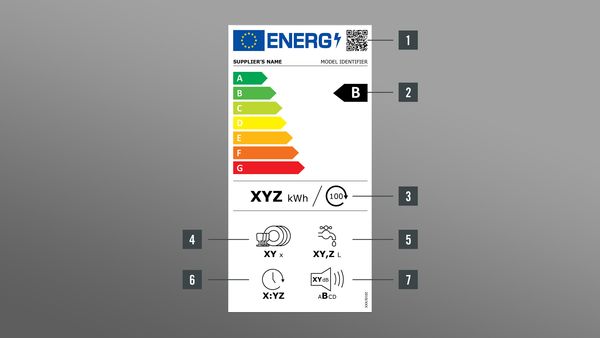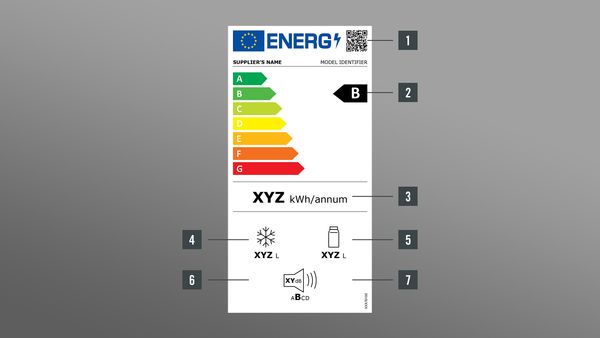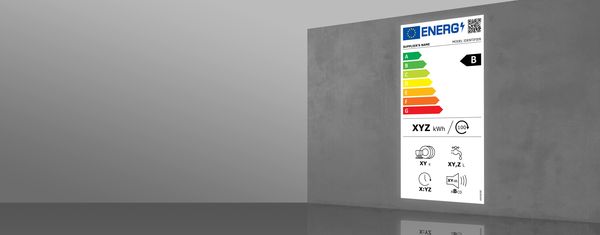The new Energy Label.
Technological development over the past few years has resulted in a higher concentration of products that carry labels with a value of A+ or better. Consequently, the label has not been fulfilling its original function as an aid for making purchasing decisions as well as it formerly did. Other basic conditions like user behavior have also changed. That’s why it’s time to adapt the existing energy label. The first home appliances to have the new label will be dishwashers and cooling appliances. As of March 1, 2021 these appliances must show the new label when sold in shops, online, etc.
The most significant change in the new Energy Labels is the elimination of the energy efficiency plus classes like, for example A+++. In the future, classification will be from A to G. New methods will also be used for measuring energy consumption and determining the label class. In addition, you will also be able to retrieve further product information directly via a QR code that is displayed on the Energy Label. The QR code forwards you to a database operated by the EU since 1.3.2021. This is where you can view and download data sheets for all appliances that require the new energy label. Access to the database is also possible via the Internet.

The energy efficiency class for dishwashers continues to be based on the “Eco” program. However, the test standard has been changed. For example, cups, pots, and plastic utensils will be used to determine cleaning and drying performance to better reflect actual usage behavior. What is new is the specification of the duration of the Eco program. This program is especially eco-friendly, is ideal for normally soiled dishes and is the most efficient program in the combination “energy and water consumption”. As with washing machines and washer-dryers, energy consumption will be based on 100 cleaning cycles.
1 QR code
2 Energy efficiency class
3 Energy consumption in kWh/100 operating cycles (in Eco program)
4 Number of standard place settings for the Eco program
5 Water consumption in litres/operating cycle (in Eco program)
6 Duration of the “Eco” program
7 Noise emissions expressed in (dB(A) re 1 PW) and noise emission class

The procedure for determining the energy class is now more comprehensive. It takes into account the type of appliance, its operating principle, the room temperature, and the number and size of storage compartments. The rest of the elements on the new Energy Label basically remain the same. Energy consumption continues to be specified in kWh as annual consumption (“annum”). The label also provides information on the total volume of all refrigerator compartments and all freezer compartments, if any, and on noise emissions and the noise emission class.
1 QR code
2 Energy efficiency class
3 Energy consumption in kWh/year (measured under new standard conditions)
4 Total volume of all freezer compartments
5 Total volume of all refrigerator compartments
6 Noise emissions expressed in dB(A) re 1 PW and noise emission class

